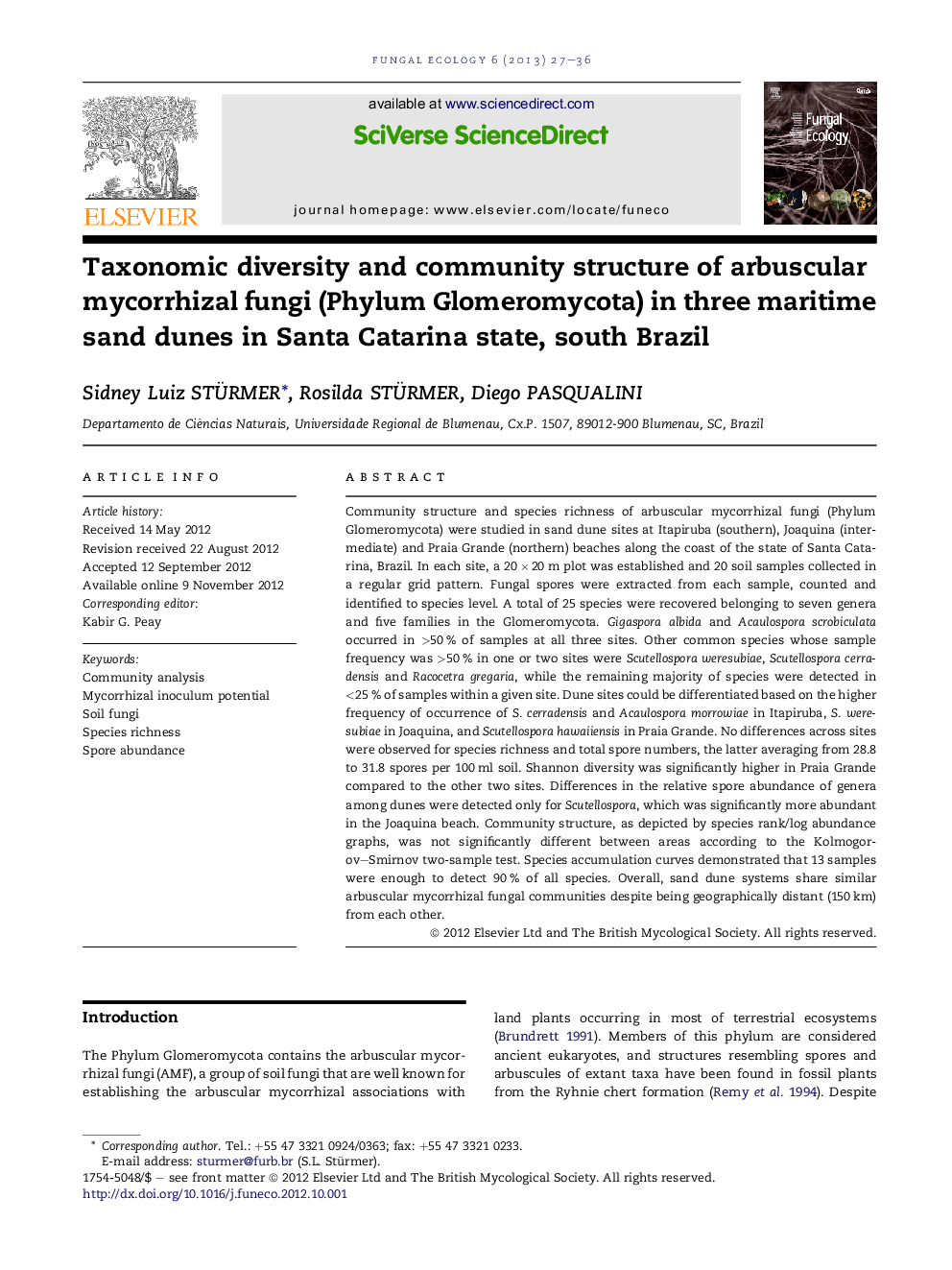| کد مقاله | کد نشریه | سال انتشار | مقاله انگلیسی | نسخه تمام متن |
|---|---|---|---|---|
| 2053974 | 1075589 | 2013 | 10 صفحه PDF | دانلود رایگان |

Community structure and species richness of arbuscular mycorrhizal fungi (Phylum Glomeromycota) were studied in sand dune sites at Itapiruba (southern), Joaquina (intermediate) and Praia Grande (northern) beaches along the coast of the state of Santa Catarina, Brazil. In each site, a 20 × 20 m plot was established and 20 soil samples collected in a regular grid pattern. Fungal spores were extracted from each sample, counted and identified to species level. A total of 25 species were recovered belonging to seven genera and five families in the Glomeromycota. Gigaspora albida and Acaulospora scrobiculata occurred in >50 % of samples at all three sites. Other common species whose sample frequency was >50 % in one or two sites were Scutellospora weresubiae, Scutellospora cerradensis and Racocetra gregaria, while the remaining majority of species were detected in <25 % of samples within a given site. Dune sites could be differentiated based on the higher frequency of occurrence of S. cerradensis and Acaulospora morrowiae in Itapiruba, S. weresubiae in Joaquina, and Scutellospora hawaiiensis in Praia Grande. No differences across sites were observed for species richness and total spore numbers, the latter averaging from 28.8 to 31.8 spores per 100 ml soil. Shannon diversity was significantly higher in Praia Grande compared to the other two sites. Differences in the relative spore abundance of genera among dunes were detected only for Scutellospora, which was significantly more abundant in the Joaquina beach. Community structure, as depicted by species rank/log abundance graphs, was not significantly different between areas according to the Kolmogorov–Smirnov two-sample test. Species accumulation curves demonstrated that 13 samples were enough to detect 90 % of all species. Overall, sand dune systems share similar arbuscular mycorrhizal fungal communities despite being geographically distant (150 km) from each other.
► Diversity of AMF in sand dunes is high.
► Community structure is similar among sand dunes.
► Diversity and abundance of AMF did not vary among dunes.
Journal: Fungal Ecology - Volume 6, Issue 1, February 2013, Pages 27–36